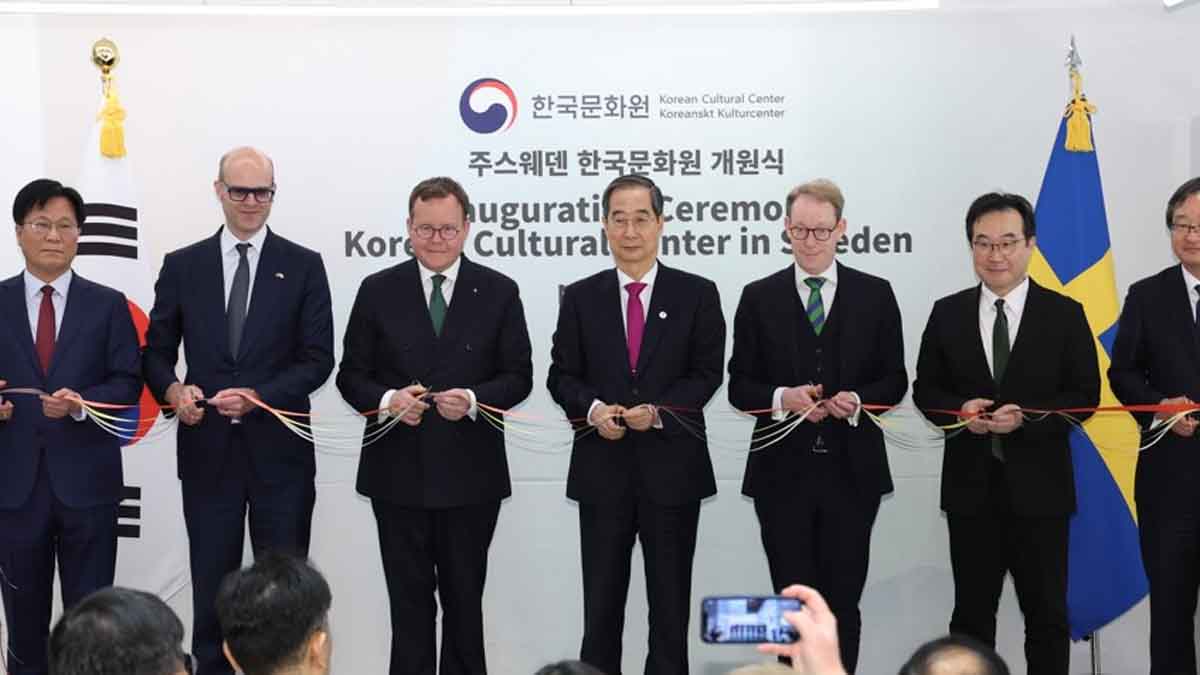
From Ainu Traditions to Modern Japan: A Cultural Journey
Introduction
The Ainu people are an indigenous group native to the northern regions of Japan, particularly Hokkaido, as well as parts of Russia. They have a rich and vibrant culture that dates back thousands of years, characterized by unique traditions, art, music, language, cuisine, clothing, architecture, and festivals. However, over the centuries, the Ainu people have faced significant challenges and discrimination, particularly during the period of Japanese colonization. Today, there is a growing movement to preserve and promote Ainu heritage and rights, as well as to celebrate their contributions to Japanese society.
Preserving and promoting Ainu heritage is of utmost importance for several reasons. Firstly, it is crucial for the preservation of cultural diversity in Japan. The Ainu culture is distinct from mainstream Japanese culture and represents a unique aspect of the country’s history. By preserving Ainu heritage, Japan can showcase its rich cultural tapestry and promote a more inclusive society that values and respects all its citizens. Secondly, preserving Ainu heritage is essential for the well-being and identity of the Ainu people themselves. Like many indigenous communities around the world, the Ainu have faced marginalization and discrimination that has threatened their cultural survival. By preserving their heritage, the Ainu people can reclaim their identity and strengthen their sense of belonging.
The Impact of Japanese Colonization on Ainu Society
The colonization of Japan by the Yamato people in the 9th century marked a turning point in Ainu history. As the Yamato expanded their territory into Hokkaido and other northern regions, they imposed their language, customs, and political systems on the Ainu people. This colonization had a profound impact on Ainu society and culture.
One of the most significant effects of Japanese colonization was the marginalization and discrimination of the Ainu people. The Yamato considered themselves superior to the Ainu and sought to assimilate them into mainstream Japanese society. Ainu traditions and practices were suppressed, and the Ainu people were forced to adopt Japanese names and customs. They were also subjected to discriminatory policies, such as restrictions on land ownership and employment opportunities.
The Struggle for Ainu Rights and Recognition
In recent decades, there has been a growing movement among the Ainu people to fight for their rights and recognition. Ainu activists and advocates have been working tirelessly to raise awareness about the history and culture of the Ainu people and to challenge the discrimination they face.
One of the key milestones in the struggle for Ainu rights was the passage of the Ainu Culture Promotion Act in 1997. This legislation recognized the Ainu as an indigenous people of Japan and aimed to promote their culture and heritage. It also established the Foundation for Research and Promotion of Ainu Culture (FRPAC), which has been instrumental in supporting Ainu cultural initiatives.
Despite these advancements, there is still much work to be done in terms of recognizing and protecting Ainu rights. The Japanese government has been criticized for its slow progress in implementing policies that address the historical injustices faced by the Ainu people. There is a need for continued advocacy and activism to ensure that the rights and cultural heritage of the Ainu people are fully recognized and respected.
Ainu Art and Music: Preserving the Cultural Heritage
Ainu art and music play a vital role in preserving and promoting Ainu cultural heritage. Traditional Ainu art is characterized by intricate woodcarvings, woven textiles, embroidery, and beadwork. These art forms often depict natural motifs such as animals, plants, and celestial bodies, reflecting the close relationship between the Ainu people and their environment.
In recent years, there has been a resurgence of interest in traditional Ainu art forms, with contemporary artists incorporating traditional techniques into their work. This has helped to revitalize traditional art forms and ensure their continuity for future generations. Additionally, Ainu musicians have been using traditional instruments such as the mukkuri (a mouth harp) and tonkori (a stringed instrument) to create unique and captivating music that celebrates Ainu culture.
The Role of Ainu Language in Promoting Cultural Identity
The Ainu language is a crucial component of Ainu cultural identity. It is a distinct language with its own grammar, vocabulary, and pronunciation. However, due to the historical suppression of Ainu culture, the language has been in decline for many years.
Efforts are being made to revitalize and promote the Ainu language. Language revitalization programs have been established to teach Ainu to both Ainu and non-Ainu individuals. These programs aim to preserve the language and ensure its transmission to future generations. Additionally, there are ongoing efforts to incorporate Ainu language education into mainstream schools in Hokkaido.
However, there are challenges to promoting Ainu language education. One of the main challenges is the lack of fluent speakers, as many older Ainu individuals who are fluent in the language are passing away. There is a need for increased support and resources to train new speakers and develop teaching materials. Despite these challenges, the revitalization of the Ainu language is crucial for preserving Ainu cultural identity and ensuring the survival of this unique linguistic heritage.
Ainu Cuisine: A Unique Culinary Experience
Ainu cuisine is a unique culinary experience that reflects the close relationship between the Ainu people and nature. Traditional Ainu dishes often feature ingredients such as salmon, venison, wild plants, and mushrooms, which are abundant in the northern regions of Japan. The preparation of these ingredients often involves smoking, fermenting, or drying them to enhance their flavors.
One of the most famous traditional Ainu dishes is “ikameshi,” which consists of rice stuffed inside a squid and then grilled or steamed. Another popular dish is “rimse,” which is a type of fermented salmon. These dishes not only showcase the culinary skills of the Ainu people but also highlight their deep connection to the natural environment.
In recent years, there has been a growing interest in Ainu cuisine among both locals and tourists. Restaurants and food stalls specializing in Ainu cuisine have been popping up in Hokkaido, offering visitors the opportunity to taste these unique dishes. Ainu culinary tourism provides an excellent opportunity for cultural exchange and understanding, as visitors can learn about Ainu traditions and history through their food.
Ainu Clothing and Fashion: A Blend of Tradition and Modernity
Ainu clothing and fashion are a blend of tradition and modernity, reflecting the evolving nature of Ainu culture. Traditional Ainu garments are characterized by intricate embroidery, beadwork, and patterns inspired by nature. These garments often feature geometric designs and motifs such as animals, plants, and celestial bodies.
In recent years, there has been a resurgence of interest in traditional Ainu clothing among both Ainu individuals and non-Ainu designers. Contemporary Ainu fashion designers are incorporating traditional elements into their designs, creating unique and innovative pieces that celebrate Ainu culture. This blending of tradition and modernity not only helps to preserve traditional Ainu clothing but also promotes cultural exchange and understanding.
Ainu Architecture: Building a Sustainable Future
Ainu architecture is characterized by its sustainable principles and harmonious integration with the natural environment. Traditional Ainu buildings are made from natural materials such as wood, straw, and bark. They are designed to withstand the harsh climate of Hokkaido, with steeply sloping roofs to prevent snow accumulation.
Examples of traditional Ainu buildings include “chise,” which are traditional houses made from wooden logs, and “koropokkuru,” which are small underground dwellings used for storage and shelter. These buildings not only showcase the architectural skills of the Ainu people but also reflect their deep respect for nature and their desire to live in harmony with the environment.
There are opportunities for sustainable Ainu architecture and design in modern times. The principles of Ainu architecture, such as the use of natural materials and sustainable construction techniques, can be applied to contemporary buildings to create environmentally friendly and culturally significant structures. Additionally, there is a growing interest in eco-tourism and sustainable development in Hokkaido, which provides opportunities for Ainu communities to showcase their architectural heritage and contribute to sustainable tourism initiatives.
Ainu Festivals and Celebrations: Honoring Ancestral Spirits
Ainu festivals and celebrations play a crucial role in honoring ancestral spirits and preserving Ainu cultural traditions. These festivals are often held to mark important milestones in the agricultural calendar or to give thanks for a bountiful harvest. They involve various rituals, dances, music, and feasts.
One of the most famous Ainu festivals is the “Iomante,” which is a bear-sending ceremony held to honor the spirit of the bear. The bear is considered a sacred animal in Ainu culture and is believed to be a messenger between humans and gods. The Iomante involves the hunting and sacrifice of a bear, followed by a feast and ceremonial dances.
These festivals not only provide an opportunity for the Ainu people to connect with their ancestral spirits but also allow outsiders to learn about and appreciate Ainu culture. They are an important part of the cultural landscape of Hokkaido and contribute to the preservation and promotion of Ainu heritage.
Ainu Tourism: Exploring the Cultural Landscape
Ainu tourism offers visitors the opportunity to explore the cultural landscape of Hokkaido and learn about Ainu traditions, history, and way of life. There are several Ainu cultural centers and museums in Hokkaido that showcase Ainu art, artifacts, and traditional practices. These centers often offer guided tours, workshops, and performances that allow visitors to engage with Ainu culture firsthand.
In addition to cultural centers, there are also opportunities for cultural tourism in Ainu communities. Some Ainu villages offer homestay programs, where visitors can stay with Ainu families and experience their daily life and traditions. This type of tourism provides a more immersive and authentic experience and allows visitors to develop a deeper understanding of Ainu culture.
However, there are challenges to sustainable tourism development in Ainu communities. There is a need for responsible tourism practices that respect the cultural traditions and privacy of the Ainu people. Additionally, there is a need for capacity building and training programs to ensure that Ainu communities can benefit from tourism while preserving their cultural heritage.
Ainu Education: Revitalizing the Language and Culture
Ainu education plays a crucial role in revitalizing the language and culture of the Ainu people. Historically, Ainu culture and language were not taught in mainstream schools in Hokkaido, leading to a decline in their transmission to younger generations. However, in recent years, there have been efforts to promote Ainu language and culture in schools.
One of the key initiatives is the inclusion of Ainu language education in the curriculum of some schools in Hokkaido. This allows students to learn about Ainu history, traditions, and language from an early age. Additionally, there are community-based education initiatives that offer classes and workshops on Ainu language and culture.
These efforts are crucial for ensuring the survival of Ainu language and culture. By incorporating Ainu education into mainstream schools, Japan can promote a more inclusive society that values and respects the cultural diversity of its citizens. It also provides opportunities for young Ainu individuals to connect with their heritage and develop a strong sense of cultural identity.
Embracing Diversity in Modern Japan
In conclusion, the preservation and promotion of Ainu heritage are of utmost importance for Japan. The Ainu people have a rich and vibrant culture that is distinct from mainstream Japanese culture. By preserving Ainu heritage, Japan can showcase its cultural diversity and promote a more inclusive society that values and respects all its citizens.
There are several aspects of Ainu culture that are worth preserving and promoting, including art, music, language, cuisine, clothing, architecture, festivals, and education. These aspects not only reflect the unique traditions and practices of the Ainu people but also contribute to the cultural landscape of Hokkaido and Japan as a whole.
To support Ainu rights and culture, there is a need for continued advocacy and activism. The Japanese government should take further steps to recognize and protect Ainu rights, as well as to implement policies that address the historical injustices faced by the Ainu people. Additionally, there is a need for increased support and resources for Ainu cultural initiatives, such as language revitalization programs, art exhibitions, music performances, and educational programs.
By embracing diversity and promoting cultural heritage, Japan can create a more inclusive society that values and respects all its citizens. The preservation and promotion of Ainu heritage are not only important for the Ainu people themselves but also for the well-being and identity of Japan as a whole. It is time to celebrate the contributions of the Ainu people to Japanese society and ensure that their rights and cultural heritage are fully recognized and respected.



